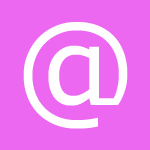Geeky History: The Story Behind UI Symbols

They grace our gadgets and electrical appliances. We see them countless times a day, but most of us never bother to ask where they came from. They are User Interface (UI) symbols and each one has a unique tale behind their rise from obscurity to ubiquity.
So where did UI symbols come from?
1. Power – A Symbol of Opposites

You see it on computers, TV remotes, in cars and even on NYC condoms: The famous “1-inside-an-0” power symbol knows how to turn it on (and off). The now famous design comes from a very practical background; as far back as World War II, engineers used the binary system to code their power buttons, toggles and switches – with 1 meaning “On” and 0 meaning “Off”. Once the “On/Off” switch advanced to a single power button, the 1 and 0 were happily thrown together to create the power symbol.
2. USB – The Mark of the Devil

The Universal Serial Bus (USB), with its divine ability to store more than two documents at a time, is the hero that slayed the floppy disk. But the USB also has some more sinister associations. The three-pronged symbol has been likened to the devil’s fork, causing some groups to ban the USB trident. A more popular account of the design suggests that that the symbol was adapted from the trident of Neptune, Roman God of the sea. The three pointed triangles were adapted to a circle, triangle, and square to represent three unique devices that can connect to one central destination.
3. @ – The Status Symbol

The Snail. The Little Mouse. The Monkey’s tail. A symbol with dozens of aliases and no official name. Before the dawn of the email (imagine the horror!), the @ had a series of minor roles, used for beverage measurements, accounting units, and to represent weight. So if you were buying, say, 1 dozen donuts, you could write it as 12 donuts @ $2.50 each. With the advent of the Internet and email, @ took on the job of official separator of user name and web server, placing it on keyboards the world over. Today, the @ has grown far from its humble beginnings; social media has put @ on the symbol A-list where it now enjoys a career of global proportions. @’s superstar power includes Twitter handles, Instagram user names, Facebook messages and even LinkedIn. And to celebrate @’s newfound glory, the MoMa has given it a coveted spot in its architecture and design collection.
What are some of your favorite UI symbols and what’s their story? Let us know in the comments below!